A New Framework for Assessment of Offshore Wind Farm Location
Abstract
:1. Introduction
- (1)
- The influence of geo-humanities is considered in assessing wind-energy resources, and a comprehensive, reasonable, mutually independent risk indicator system for wind-energy resources is constructed;
- (2)
- The impact of different weighting methods on the wind-energy-resource assessment results is explored, and the influence of subjective knowledge based on experts and objective laws based on data on the weighting of the index system are comprehensively evaluated;
- (3)
- The differences among the results of comprehensive wind-resource risk zoning, the results of wind-energy-resource risk zoning that only considers the influence of the natural environment, and the results of zoning that only considers geo-human influences are compared, and new conclusions are obtained.
2. Index Selection and Data Sources
2.1. Wind-Energy-Resource Assessment Index System
2.1.1. Wind Power Density (WPD)
2.1.2. Frequency of Effective Wind Speed (EWSO)
2.1.3. Energy-Level Frequencies above 200W·m−2 (RLO)
2.1.4. Coefficient of Variation in WPD (Cv)
2.1.5. Effective Reserves of WPD (ER)
2.1.6. Extreme Wind Speed (EWS)
2.2. Natural Environment Assessment Index System
2.2.1. Two-Meter Temperature (T2m)
2.2.2. Water Depth (WD)
2.2.3. Offshore Distance (DC)
2.3. Geopolitical Human Assessment Indicators (ICRG)
2.4. Comprehensive Risk Assessment System
3. Methods
3.1. Data Analysis and Processing
3.1.1. Correlation Analysis
3.1.2. Principal Component Analysis
3.2. Indicator Weights
3.2.1. Entropy Weight
3.2.2. CRITIC
3.2.3. Analytic Hierarchy Process
3.3. Comprehensive Assessment Method
- (1)
- Construct a decision weighting matrix.
- (2)
- Calculate the positive ideal solution and the negative ideal solution.
- (3)
- Calculate the distance of each scenario from the positive ideal solution and the negative ideal solution.
- (4)
- Calculate the nearness degree.
4. Results and Discussion
4.1. Index System Establishment and Rationality Analysis
4.2. Weight Determination and Rationality Analysis
4.2.1. Comparison of Weight Results
4.2.2. General Weight
4.3. Comparison and Discussion of Regionalization Results
- (1)
- Somali Sea area: The Somali Sea area is close to the Gulf of Aden, which is the connection between the Indian Ocean and the Mediterranean Sea, hosts important fuel ports and trade transit ports of the Atlantic Ocean route as well as exports from the southeast Mediterranean Sea and the entire Middle East. Thus, the Gulf of Aden is in an important strategic position. Considering only wind-energy resources, the region is a relatively large value center for wind-energy resources. However, Somalia has a long history of political instability, war, and piracy along its coast. It is ranked by the International Maritime Bureau as one of the most dangerous seas in the world. In addition, Somalia’s low economic and cultural development levels make it difficult to build infrastructure. Therefore, the risk of siting wind power plants in this sea area significantly increases after taking complete account of political and human factors;
- (2)
- In addition, the geo-humanistic risk of this region decreased in 2020, while the risk of wind-energy resources remained unchanged, and its recommended site selection area increased;
- (3)
- Persian Gulf Sea: The Persian Gulf Sea is a gulf in the northwest of the Arabian Sea extending into the Asian continent, located between the Iranian plateau and the Arabian Peninsula, surrounded by the world’s most enormous oil treasure trove on land, with a developed oil industry in the coastal countries. The region is rich in wind-energy resources due to natural factors. Moreover, the countries surrounding the sea are more politically stable, less war-torn, and have more developed industries. Therefore, after fully considering the political and human factors, the risk of siting wind power plants in this area is still at a low level;
- (4)
- The Timor Sea area in northern Australia: It is a sea area connecting the Indian Ocean and the Pacific Ocean. It is located between Timor Island and north-western Australia. It is connected to the Indian Ocean in the west and the Arafura Sea in the east. The wind-energy expectations for this area are high due to natural factors. Furthermore, Australia is politically stable, war-free, and industrially developed in the vicinity of this sea area. Therefore, after fully considering the political and human factors, the risk of siting wind power plants in this area is still at a low level;
- (5)
- Northern Sri Lankan waters in southern India: They are located in the Indian Ocean, southern India, and northern Sri Lankan waters. The wind-energy expectation in this area is higher due to natural factors. Moreover, the sea near India and Sri Lanka is relatively stable politically and presents relatively low war-related risk. India and Sri Lanka have large populations and more developed industries, with a high demand for electricity. In addition, the port of Colombo in this sea area is one of the largest artificial ports in the world. It is one of the critical intermediate ports in the world’s navigation routes among Europe, Asia, the Pacific, and the Indian Ocean. China has a strong political influence on the sea area. Therefore, the risk of siting wind power plants in this sea area is at a low level after taking complete account of political and human factors.
5. Conclusions
- Our study introduces authoritative ICRG data as geo-human factors for the first time in wind-energy-resource assessment. It constructs a comprehensive, reasonable, and independent comprehensive risk index system for wind-energy resources, making it different from traditional wind-energy-resource regionalization studies that only consider natural factors, policies, and other single factors. The results show that the wind-energy-resource factor is the most important, and the geo-human factor is the second;
- Our study discusses the influence of different weighting methods on the wind-energy-resource assessment results. It comprehensively evaluates the influence of subjective knowledge based on experts and objective laws based on data on the weight determination of the index system. The results show that the entropy weight method is unsuitable for this research study. The general weight composed of the CRITIC method and analytic hierarchy process is the most in line with the actual demand;
- Our study compares the differences among the results of the comprehensive risk zoning of wind-energy resources, the results of the risk zoning of wind-energy resources that only considers the impact on the natural environment, and the results of geo-human zoning published by ICRG. The results show that comprehensive zoning is the most reasonable. In particular, unlike previous research results that only considered wind-energy factors, this paper does not recommend the Somali sea as a priority area for wind-energy location due to its long-standing political instability, economic downturn, and numerous pirates.
Author Contributions
Funding
Conflicts of Interest
References
- Len, C. China’s 21st Century Maritime Silk Road Initiative, Energy Security and SLOC Access. Marit. Aff. 2015, 11, 1–18. [Google Scholar] [CrossRef]
- Blanchard, J.F. China’s Maritime Silk Road Initiative and South Asia: Political and Economic Contours, Challenges, and Conundrums; Springer: Berlin/Heidelberg, Germany, 2018; ISBN 9789811052392. [Google Scholar]
- Chang, Y.C. The ‘21st Century Maritime Silk Road Initiative’ and Naval Diplomacy in China. Ocean Coast. Manag. 2018, 153, 148–156. [Google Scholar] [CrossRef]
- Zhang, X.; Zhang, J.; Fan, C.; Meng, J.; Wang, J.; Wan, Y. Analysis of Dynamic Characteristics of the 21st Century Maritime Silk Road. J. Ocean Univ. China 2018, 17, 487–497. [Google Scholar] [CrossRef]
- Pimentel, D.; Hurd, L.E.; Bellotti, A.C.; Forster, M.J.; Oka, I.N.; Sholes, O.D.; Whitman, R.J. Food Production and the Energy Crisis. Science 1973, 182, 443–449. [Google Scholar] [CrossRef] [PubMed]
- Carraro, C.; Siniscalco, D. Strategies for the International Protection of the Environment. J. Public Econ. 1993, 52, 309–328. [Google Scholar] [CrossRef]
- Wang, X.; Guo, P.; Huang, X. A Review of Wind Power Forecasting Models. Energy Procedia 2011, 12, 770–778. [Google Scholar] [CrossRef]
- Chang, W.-Y. A Literature Review of Wind Forecasting Methods. J. Power Energy Eng. 2014, 02, 161–168. [Google Scholar] [CrossRef]
- Archer, C.L.; Jacobson, M.Z. Evaluation of Global Wind Power. J. Geophys. Res. Atmos. 2005, 110, 1–20. [Google Scholar] [CrossRef]
- Mohammadi, K.; Shamshirband, S.; Yee, P.L.; Petković, D.; Zamani, M.; Ch, S. Predicting the Wind Power Density Based upon Extreme Learning Machine. Energy 2015, 86, 232–239. [Google Scholar] [CrossRef]
- Mohammadi, K.; Alavi, O.; Mostafaeipour, A.; Goudarzi, N.; Jalilvand, M. Assessing Different Parameters Estimation Methods of Weibull Distribution to Compute Wind Power Density. Energy Convers. Manag. 2016, 108, 322–335. [Google Scholar] [CrossRef]
- Zheng, C.W.; Li, C.Y.; Pan, J.; Liu, M.Y.; Xia, L.L. An Overview of Global Ocean Wind Energy Resource Evaluations. Renew. Sustain. Energy Rev. 2016, 53, 1240–1251. [Google Scholar] [CrossRef]
- Gamboa, G.; Munda, G. The Problem of Windfarm Location: A Social Multi-Criteria Evaluation Framework. Energy Policy 2007, 35, 1564–1583. [Google Scholar] [CrossRef]
- Yeh, T.M.; Huang, Y.L. Factors in Determining Wind Farm Location: Integrating GQM, FuzzyDEMATEL, and ANP. Renew. Energy 2014, 66, 159–169. [Google Scholar] [CrossRef]
- Zheng, C.W.; Xiao, Z.N.; Peng, Y.H.; Li, C.Y.; Du, Z.B. Rezoning Global Offshore Wind Energy Resources. Renew. Energy 2018, 129, 1–11. [Google Scholar] [CrossRef]
- Ziemba, P.; Wątróbski, J.; Zioło, M.; Karczmarczyk, A. Using the PROSA Method in Offshore Wind Farm Location Problems. Energies 2017, 10, 1755. [Google Scholar] [CrossRef]
- Gao, X.; Yang, H.; Lu, L. Study on Offshore Wind Power Potential and Wind Farm Optimization in Hong Kong. Appl. Energy 2014, 130, 519–531. [Google Scholar] [CrossRef]
- De Vos, K.; Morbee, J.; Driesen, J.; Belmans, R. Impact of Wind Power on Sizing and Allocation of Reserve Requirements. IET Renew. Power Gener. 2013, 7, 1–9. [Google Scholar] [CrossRef]
- An, Y.; Pandey, M.D. A Comparison of Methods of Extreme Wind Speed Estimation. J. Wind Eng. Ind. Aerodyn. 2005, 93, 535–545. [Google Scholar] [CrossRef]
- Young, I.R.; Vinoth, J.; Zieger, S.; Babanin, A.V. Investigation of Trends in Extreme Value Wave Height and Wind Speed. J. Geophys. Res. Ocean. 2012, 117, 1–13. [Google Scholar] [CrossRef]
- Ukwueze, E.R.; Ugwu, U.C.; Okafor, O.A. Impact of Institutional Quality on Multilateral Aid in Nigeria. J. Econ. Sci. Res. 2021, 4, 3116. [Google Scholar] [CrossRef]
- Javaid, A.; Arshed, N.; Munir, M.; Zakaria, Z.A.; Alamri, F.S.; Abd El-Wahed Khalifa, H.; Hanif, U. Econometric Assessment of Institutional Quality in Mitigating Global Climate-Change Risk. Sustainbility 2022, 14, 669. [Google Scholar] [CrossRef]
- Brown, C.L.; Cavusgil, S.T.; Lord, A.W. Country-Risk Measurement and Analysis: A New Conceptualization and Managerial Tool. Int. Bus. Rev. 2015, 24, 246–265. [Google Scholar] [CrossRef]
- Gezikol, B.; Tunahan, H. The Econometric Analysis of the Relationship Between Perceived Corruption, Foreign Trade and Foreign Direct Investment in the Context of International Indices. Alphanumeric J. 2018, 6, 117. [Google Scholar] [CrossRef]
- Barker, D.L.A. Human Rights and the Law of Persons. Law Made Simple 2020, 28, 84–112. [Google Scholar] [CrossRef]
- Wong, M.S. The United Nations Convention on the Law of the Sea 1982. Multilater. Environ. Treaties 2017, 488, 145–165. [Google Scholar] [CrossRef]
- Martinez, A.M.; Kak, A.C. PCA versus LDA. IEEE Trans. Pattern Anal. Mach. Intell. 2001, 23, 228–233. [Google Scholar] [CrossRef]
- Subasi, A.; Gursoy, M.I. EEG Signal Classification Using PCA, ICA, LDA and Support Vector Machines. Expert Syst. Appl. 2010, 37, 8659–8666. [Google Scholar] [CrossRef]
- Li, X.; Wang, K.; Liuz, L.; Xin, J.; Yang, H.; Gao, C. Application of the Entropy Weight and TOPSIS Method in Safety Evaluation of Coal Mines. Procedia Eng. 2011, 26, 2085–2091. [Google Scholar] [CrossRef]
- Delgado, A.; Romero, I. Environmental Conflict Analysis Using an Integrated Grey Clustering and Entropy-Weight Method: A Case Study of a Mining Project in Peru. Environ. Model. Softw. 2016, 77, 108–121. [Google Scholar] [CrossRef]
- Shannon, C.E. A Mathematical Theory of Communication. Bell Syst. Tech. J. 1948, 27, 623–656. [Google Scholar] [CrossRef]
- Konda V, R.; Tsitsiklis J, N. On Actor-Critic Algorithms. SIAM J. Control Optim. 2003, 42, 1143–1166. [Google Scholar] [CrossRef]
- Vaidya, O.S.; Kumar, S. Analytic Hierarchy Process: An Overview of Applications. Eur. J. Oper. Res. 2006, 169, 1–29. [Google Scholar] [CrossRef]
- Saaty, T.L. What Is the Analytic Hierarchy Process? Springer: Berlin/Heidelberg, Germany, 1988. [Google Scholar]
- Dos Santos, P.H.; Neves, S.M.; Sant’Anna, D.O.; de Oliveira, C.H.; Carvalho, H.D. The Analytic Hierarchy Process Supporting Decision Making for Sustainable Development: An Overview of Applications. J. Clean. Prod. 2019, 212, 119–138. [Google Scholar] [CrossRef]
- Behzadian, M.; Khanmohammadi Otaghsara, S.; Yazdani, M.; Ignatius, J. A State-of the-Art Survey of TOPSIS Applications. Expert Syst. Appl. 2012, 39, 13051–13069. [Google Scholar] [CrossRef]
- Salih, M.M.; Zaidan, B.B.; Zaidan, A.A.; Ahmed, M.A. Survey on Fuzzy TOPSIS State-of-the-Art between 2007 and 2017. Comput. Oper. Res. 2019, 104, 207–227. [Google Scholar] [CrossRef]
- Mokhtarian, M.N. Extension of Fuzzy TOPSIS Method Based on Interval-Valued Fuzzy Sets. Appl. Soft Comput. J. 2015, 26, 513–514. [Google Scholar] [CrossRef]
- Leung, D.Y.C.; Yang, Y. Wind Energy Development and Its Environmental Impact: A Review. Renew. Sustain. Energy Rev. 2012, 16, 1031–1039. [Google Scholar] [CrossRef]
- Tabassum, A.; Premalatha, M.; Abbasi, T.; Abbasi, S.A. Wind Energy: Increasing Deployment, Rising Environmental Concerns. Renew. Sustain. Energy Rev. 2014, 31, 270–288. [Google Scholar] [CrossRef]

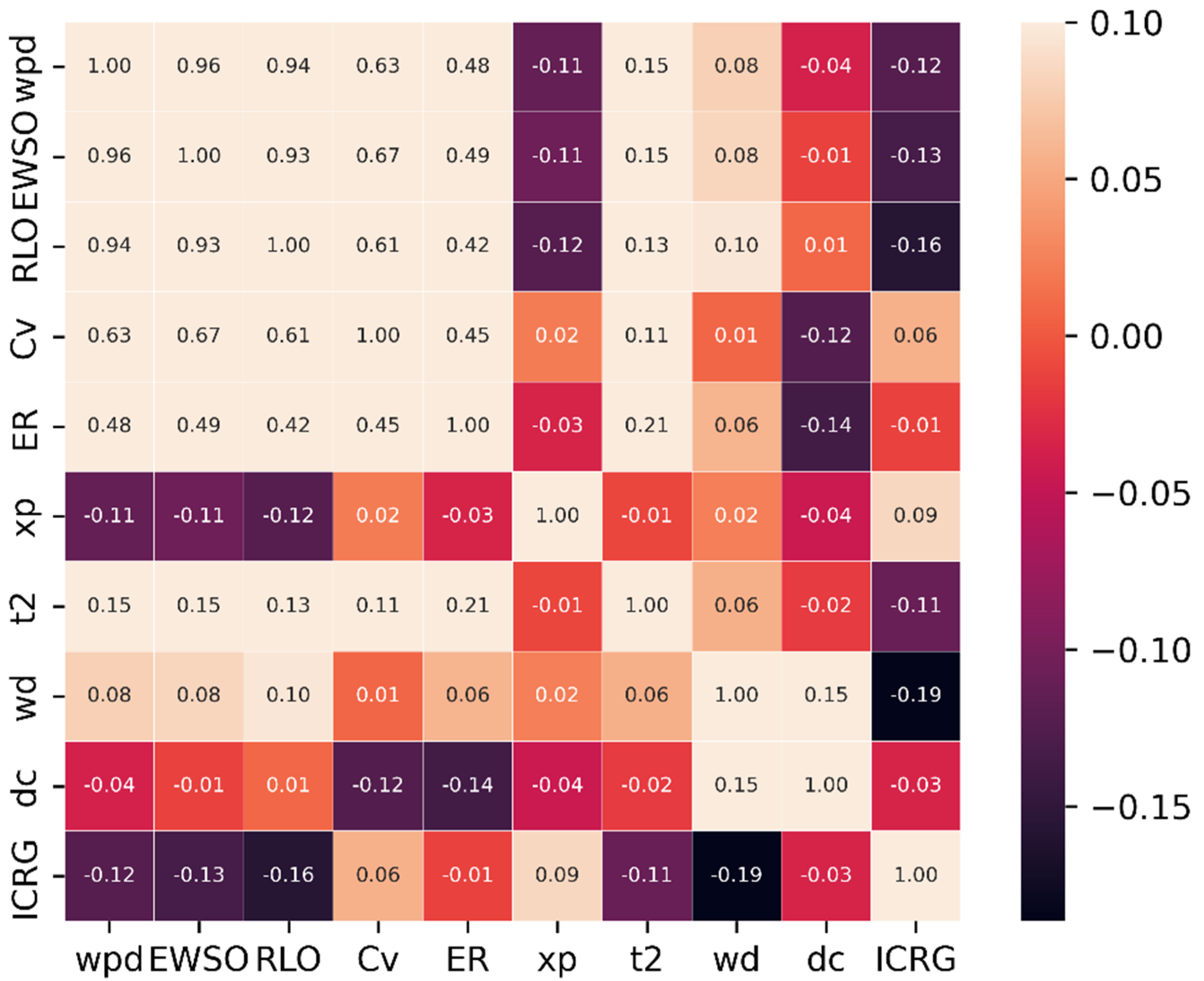
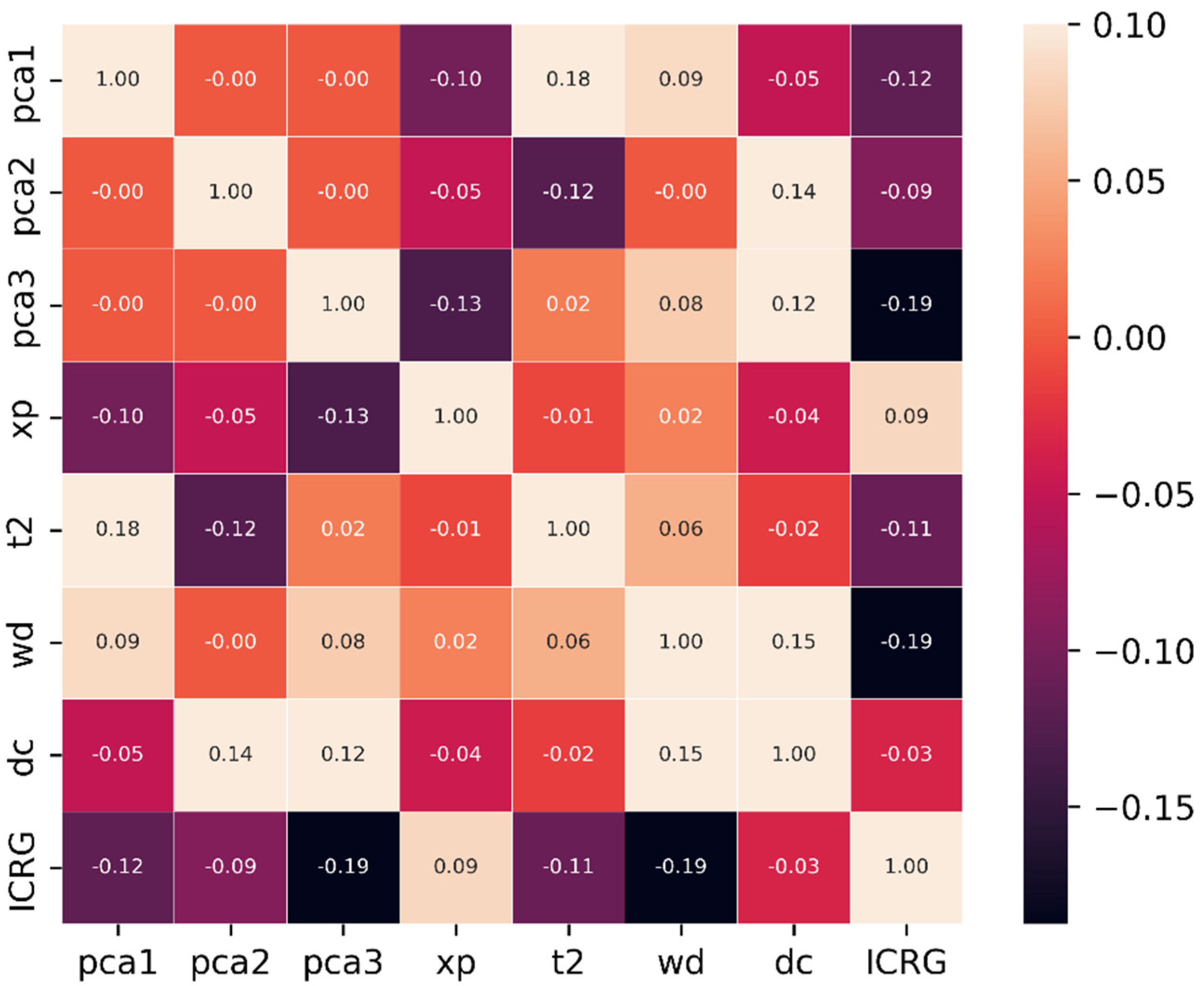
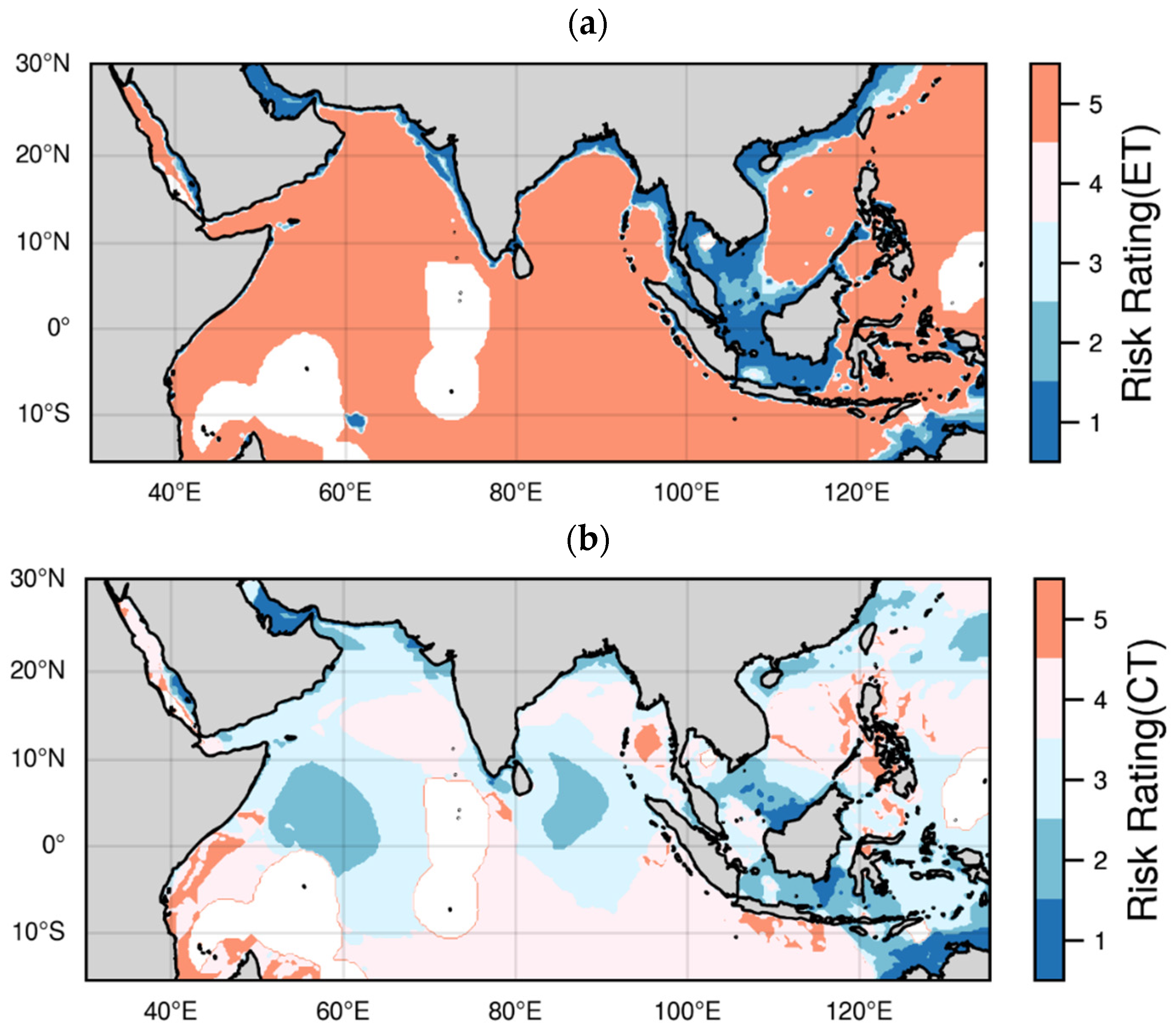
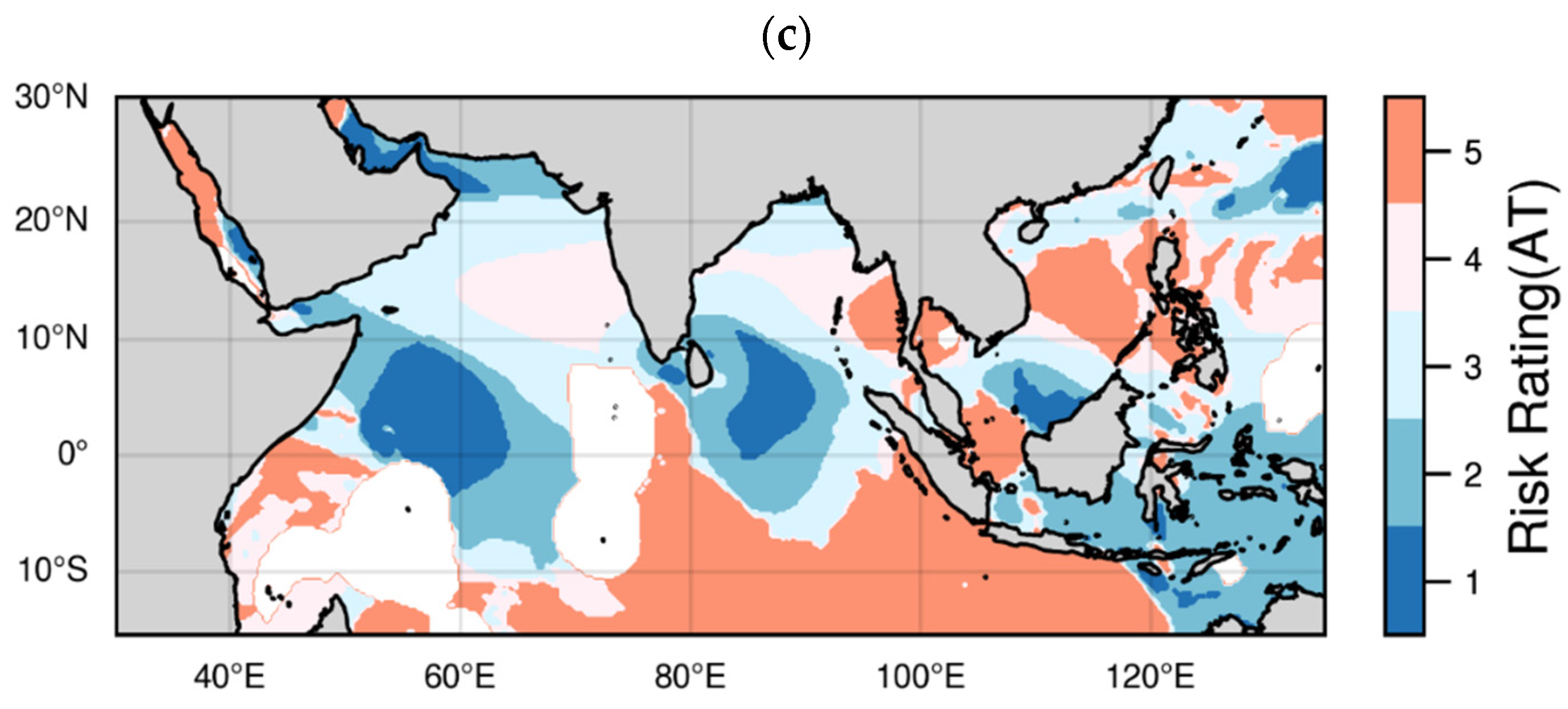
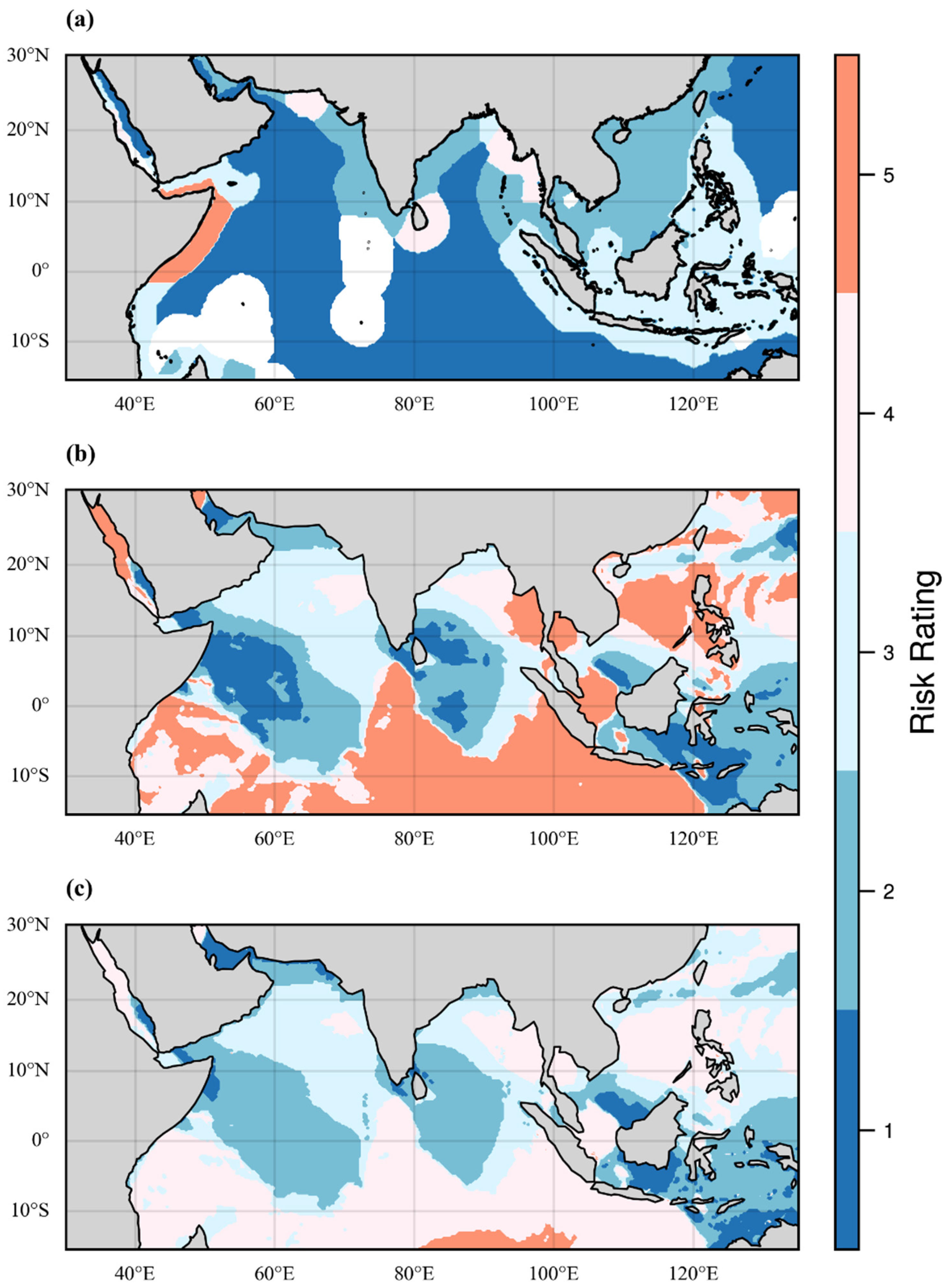
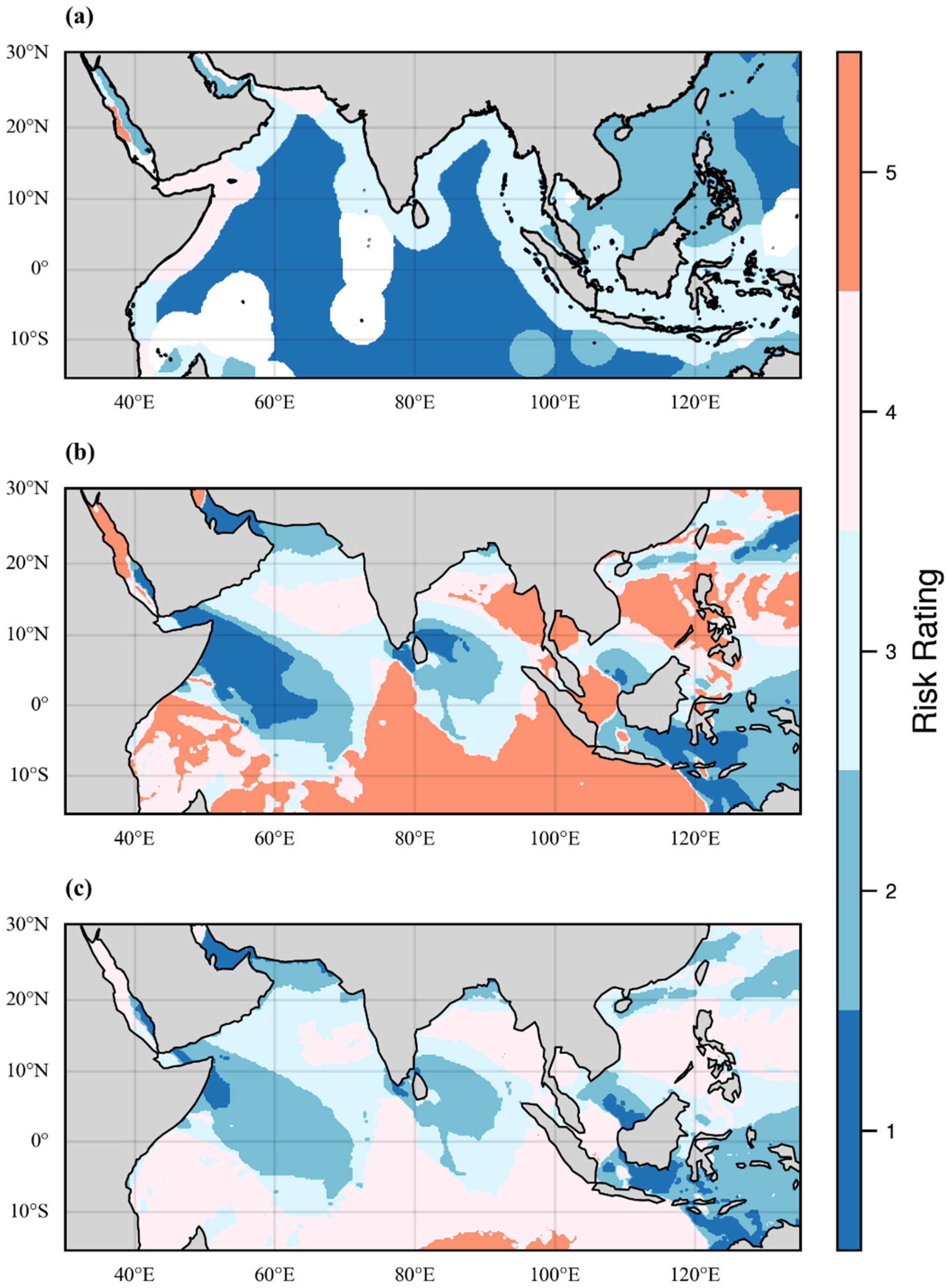
| 0.001 | 8.53 | 30 | 0.35 |
| 0.010 | 6.73 | 40 | 0.07 |
| 0.050 | 5.48 | 50 | −0.16 |
| 0.1 | 4.94 | 60 | −0.38 |
| 0.5 | 3.68 | 70 | −0.59 |
| 1 | 3.14 | 80 | −0.82 |
| 2 | 2.59 | 90 | −1.10 |
| 3 | 2.27 | 95 | −1.31 |
| 5 | 1.87 | 97 | −1.43 |
| 10 | 1.30 | 99 | −1.64 |
| 20 | 0.72 | 99.9 | −1.96 |
| Target Layer | Criterion Layer | Index Layer | Index Attribute |
|---|---|---|---|
| Wind-Farm Site Expectation | Wind-Energy Resources | Wind Power Density | Benefit Type |
| Frequency of Effective Wind Speed | Benefit Type | ||
| Energy-Level Frequencies above 200W·m−2 | Benefit Type | ||
| Coefficient of Variation in WPD | Cost Type | ||
| Effective Reserves of WPD | Benefit Type | ||
| Extreme Wind Speed | Cost Type | ||
| Natural Environment | 2 m Temperature | Cost Type | |
| Water Depth | Cost Type | ||
| Offshore Distance | Cost Type | ||
| Geography Humanities | ICRG Integrated Risk | Benefit Type |
| Index Layer | Very Poor (1) | Poor (2) | Medium (3) | Good (4) | Very Good (5) |
|---|---|---|---|---|---|
| Wind Power Density | <50 | 50~100 | 100~200 | 200~400 | >400 |
| Frequency of Effective Wind Speed | <0.2 | 0.2~0.4 | 0.4~0.6 | 0.6~0.8 | 0.8~1.0 |
| Frequencies above 200W·m−2 | <0.1 | 0.1~0.2 | 0.2~0.4 | 0.4~0.6 | 0.6~1.0 |
| Coefficient of Variation in WPD | >2.5 | 2.0~2.5 | 1.5~2.0 | 1.0~1.5 | <1.0 |
| Effective Reserves of WPD | <60 | 60~90 | 90~120 | 120~150 | >150 |
| Extreme Wind Speed | >40 | 35~40 | 30~35 | 25~30 | <25 |
| 2 m Temperature | <-20 | −20~−10 | −10~0 | 0~10 | >10 |
| Water Depth | >200 | 150~200 | 100~150 | 60~100 | <60 |
| Offshore Distance | >100 | 80~100 | 50~80 | 30~50 | <30 |
| ICRG Integrated Risk | 1 | 2 | 3 | 4 | 5 |
| Nearness Degree | Risk Degree |
| High Risk | |
| Higher Risk | |
| Medium Risk | |
| Lower Risk | |
| Low Risk |
| Index | Entropy Weight | CRITIC Weight | AHP Weight | General Weight |
|---|---|---|---|---|
| PCA1 | 0.0824 | 0.3221 | 0.4976 | 0.4099 |
| PCA2 | 0.1410 | 0.1638 | 0.1218 | 0.1428 |
| PCA3 | 0.0183 | 0.0673 | 0.0216 | 0.0444 |
| EWS | 0.0026 | 0.0120 | 0.0942 | 0.0530 |
| T2m | 0.0037 | 0.0290 | 0.0215 | 0.0252 |
| WD | 0.6977 | 0.1818 | 0.0380 | 0.1099 |
| DC | 0.0256 | 0.0705 | 0.0380 | 0.0542 |
| ICRG | 0.0286 | 0.1537 | 0.1673 | 0.1605 |
Publisher’s Note: MDPI stays neutral with regard to jurisdictional claims in published maps and institutional affiliations. |
© 2022 by the authors. Licensee MDPI, Basel, Switzerland. This article is an open access article distributed under the terms and conditions of the Creative Commons Attribution (CC BY) license (https://creativecommons.org/licenses/by/4.0/).
Share and Cite
Xu, J.; Zhang, R.; Wang, Y.; Yan, H.; Liu, Q.; Guo, Y.; Ren, Y. A New Framework for Assessment of Offshore Wind Farm Location. Energies 2022, 15, 6758. https://doi.org/10.3390/en15186758
Xu J, Zhang R, Wang Y, Yan H, Liu Q, Guo Y, Ren Y. A New Framework for Assessment of Offshore Wind Farm Location. Energies. 2022; 15(18):6758. https://doi.org/10.3390/en15186758
Chicago/Turabian StyleXu, Jing, Ren Zhang, Yangjun Wang, Hengqian Yan, Quanhong Liu, Yutong Guo, and Yongcun Ren. 2022. "A New Framework for Assessment of Offshore Wind Farm Location" Energies 15, no. 18: 6758. https://doi.org/10.3390/en15186758
APA StyleXu, J., Zhang, R., Wang, Y., Yan, H., Liu, Q., Guo, Y., & Ren, Y. (2022). A New Framework for Assessment of Offshore Wind Farm Location. Energies, 15(18), 6758. https://doi.org/10.3390/en15186758





